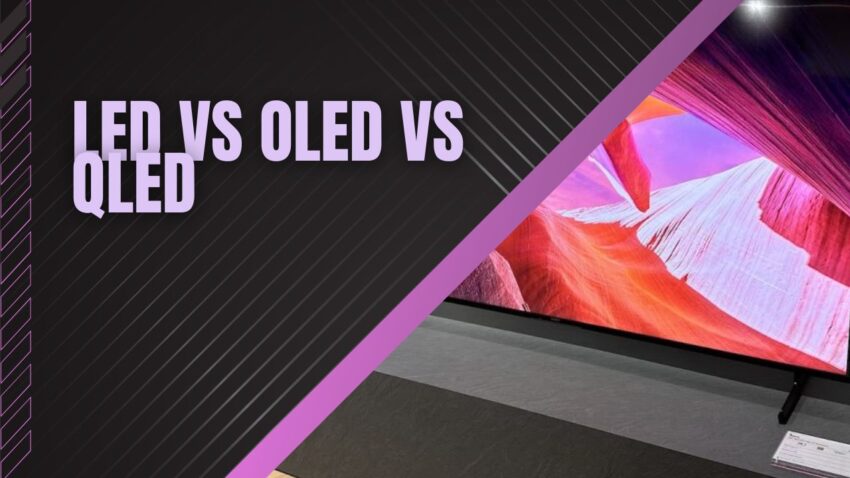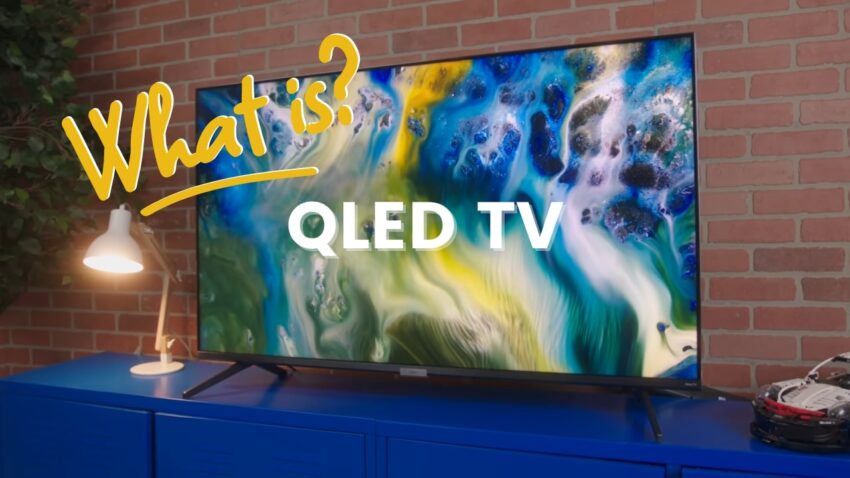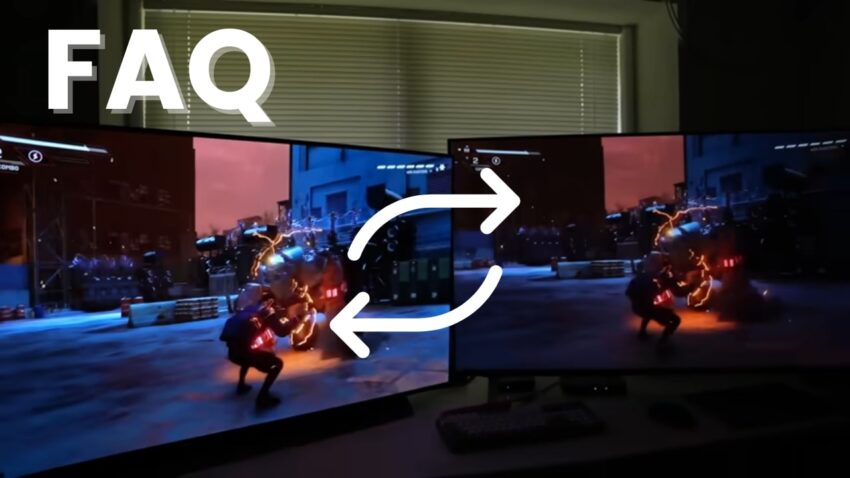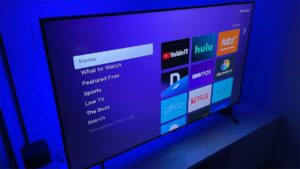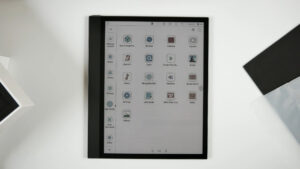The biggest factor when finding the best product for you is understanding the different techniques that each TV has. In this case, it is LED, OLED, and QLED TVs.
Below I will go over the basic of each different type and share with you their weaknesses side by side with their strengths.
I’m also aiming to keep brief as if you are more interested in the actual working behind the scenes I’ve done an article on just that which you can find here.
What is a LED TV?
A very simple answer to what is a LED TV is that it is a ‘light-emitting diode’. These types of TVs use standard LCD panels while LED lights are used as the backlight to help produce a more appealing picture. They are also more affordable and more widely available. this is because they are easy and cheaper to manufacture than its competition.
For this reason, if you find yourself needing to save some money when buying a TV, a LED TV will be your best choice. They offer the most advantages for the cost and simply are just downright reliable.
What is QLED TV?
I’m my honest opinion, the answer to what is a QLED TV is that it is just a marketing stunt by Samsung to attract potential buyers. They use the same technology as LED TVs, with subtle software enhancements that are often not worth the price they charge.
On the other hand, they do offer the best range of colors available by a small margin. Though the margin is small, it is a lead nonetheless. So if you find yourself wanting the best colors, and are okay with the cost, then QLED TVs are for you.
What is OLED TV?
The best all-around TV that money can buy. That is the answer to what is an OLED TV. They offer the most high-end result while maintaining a relative cost to their performance, unlike QLED TV. In this case then, if you find yourself with a large budget and want a TV that will outperform all other TVs, then an OLED TV will be the best for you.
Contrast Ratios
- LED TV contrast ratio: ~6000-7000:1
- QLED TV contrast ratio: ~4500-5500:1
- OLED TV contrast ratio: Infinite:1 (∞)
In recent years even the most powerful and more complex local dimming options have not begun to bridge the gap that has been created by OLED TVs. Overwhelmingly OLED TV has a much better contrast ratio, but LED TVs still beat out QLED in this category. Blacks will look good here, but in a brighter room, the differences will be noticeable.
Viewing Angles
- LED TV viewing angle: ~40°
- QLED TV viewing angle:
- OLED Tv viewing angle:
This is also another huge difference that OLED TVs tend to overwhelm their competition. Granted LED TVs do have an average viewing angle and perform well with IPS panels, they simply do not compare. The same can be said for the QLED TVs that followed in recent years. They are said to be an improvement but are just not an improvement at all.
Color Gamuts
- LED TV DCI Coverage: ~80%
- QLED TV DCI Coverage: ~86%
- OLED TV DCI Coverage: ~84%
LED TVs to get close, but not nearly as close as OLED TVs. This is very good for HDR and UHD content when watching Blu-ray movies or streaming high-demanding 4K content. The only real difference that isn’t shown here, is the cost of each. LED TVs are dramatically cheaper.
Motion Blurs
- LED TV motion blur: ~20 ms
- QLED TV motion blur: ~10 ms
- OLED TV motion blur: <0.02 ms
The LED TVs are comparable to the QLED TVs under this metric, but neither compares to the response time for the OLED TVs. This is because of the natural way that OLED TVs produce their picture. With each LED being individual from the next it makes for a lightning-fast response time that the other two cannot even begin to handle. OLED TVs are a clear winner here.
TV Brightness
- LED TV brightness: ~500 cd/m2
- QLED TV brightness: ~400 cd/m2
- OLED TV brightness: ~300 cd/m2
Though surprising to some, the LED TVs beat out QLED and OLED TVs in sheer brightness of the display. This comes down to two things, sheer power is given to the display and the technology that limits the display. Often times the OLED TVs will dim their brightness when the picture is not all that bright or when it is not needed. This prevents the display from becoming too bright but also limits the true power of its HDR content. In the case of LED TVs, they simply tend to keep bright all throughout leading to a higher level of brightness.
Gaming Performance:
When it comes to gaming, there are several factors to consider in terms of TV performance. Input lag, refresh rate, and motion handling are among the most important factors that can impact your gaming experience.
Input lag refers to the time it takes for your TV to display an image after receiving a signal from your gaming console or computer. A high input lag can result in a delay between your actions and the corresponding response on the screen, which can be frustrating and negatively impact your gameplay. LED and QLED TVs tend to have lower input lag than OLED TVs, making them a better choice for gamers who prioritize responsiveness.
Refresh rate, on the other hand, refers to how many times per second the TV updates the image on the screen. A higher refresh rate can result in smoother motion and reduce motion blur. LED and QLED TVs typically offer higher refresh rates than OLED TVs, although some newer OLED models offer higher refresh rates as well.
Motion handling is another important factor to consider for gaming. This refers to how well the TV can handle fast-moving images without blurring or ghosting. LED and QLED TVs tend to perform better in this area, although OLED TVs have been improving in recent years.
Overall, if you’re looking for a TV primarily for gaming, a LED or QLED TV may be a better choice due to their lower input lag and higher refresh rates.
Burn-In Risk:
One potential drawback of OLED TVs is the risk of burn-in. Burn-in occurs when a static image is displayed on the screen for an extended period, causing a permanent image retention that can be visible even when other content is displayed. This is more likely to occur with OLED TVs because each pixel emits its own light, and the organic material that makes up the pixels can degrade over time.
However, it’s worth noting that the risk of burn-in is relatively low for typical home use. Most content is not static enough to cause burn-in, and newer OLED models have implemented features to reduce the risk even further. For example, some OLED TVs use pixel-shifting to slightly adjust the position of static images to prevent burn-in. Additionally, many newer OLED models have built-in automatic screen savers that activate when the TV is not in use.
It’s also worth noting that other types of TVs, including LED and QLED, are not immune to image retention. While burn-in is less of a concern with these types of TVs, it’s still possible to experience temporary image retention if a static image is displayed for an extended period.
FAQ
Are OLED TVs worth the price premium over LED or QLED TVs?
It depends on your specific needs and budget. OLED TVs offer the best all-around performance, with the highest contrast ratios, fastest response times, and most accurate colors. However, they are also the most expensive. LED and QLED TVs can still offer good performance for a lower price, making them a better choice for those on a budget.
Is QLED technology just a marketing gimmick?
While QLED technology does offer some improvements over traditional LED TVs, such as a wider color gamut and higher brightness levels, it is still essentially an LED TV with some software enhancements. Whether or not the price premium for QLED technology is worth it depends on your personal preferences and budget.
What is the lifespan of an OLED TV?
OLED TVs have a typical lifespan of around 100,000 hours, which translates to over 11 years of continuous use.
Do QLED TVs have better-viewing angles than LED TVs?
While QLED TVs have slightly better viewing angles than LED TVs, they still cannot match the wider viewing angles of OLED TVs.
What is the difference between edge-lit and full-array LED TVs?
Edge-lit LED TVs have LED lights located around the edges of the screen, while full-array LED TVs have LED lights distributed across the entire back panel of the TV. Full-array LED TVs generally offer better contrast and picture quality, but they can also be more expensive.
Can OLED TVs suffer from image retention?
Yes, like all display technologies, OLED TVs can suffer from image retention if static images are displayed for extended periods of time. However, modern OLED TVs have built-in features that help mitigate the risk of image retention.
Which type of TV is best for sports?
LED TVs with high refresh rates are generally considered to be the best option for watching sports, as they can display fast-moving action with minimal motion blur.
Are QLED TVs more energy efficient than OLED TVs?
No, QLED TVs are not inherently more energy efficient than OLED TVs. The energy efficiency of a TV depends on factors like screen size, brightness, and other features.
Can LED TVs produce deep black levels?
While LED TVs can produce good black levels, they generally cannot match the infinite black levels of OLED TVs.
What is the difference between 4K and 8K TVs?
4K TVs have a resolution of 3840 x 2160 pixels, while 8K TVs have a resolution of 7680 x 4320 pixels. 8K TVs offer more than four times the resolution of 4K TVs, but there is currently very little 8K content available.
Conclusion
In conclusion, LED, QLED, and OLED TVs all have their own strengths and weaknesses, and choosing the right one depends on your budget, personal preferences, and intended use.
LED TVs are the most affordable and widely available option, making them a great choice for those on a budget. QLED TVs offer the best range of colors, but come at a higher price point with only minor software enhancements.
OLED TVs offer the best all-around performance and infinite contrast ratio, making them the best choice for those with a larger budget who want the highest quality picture.


